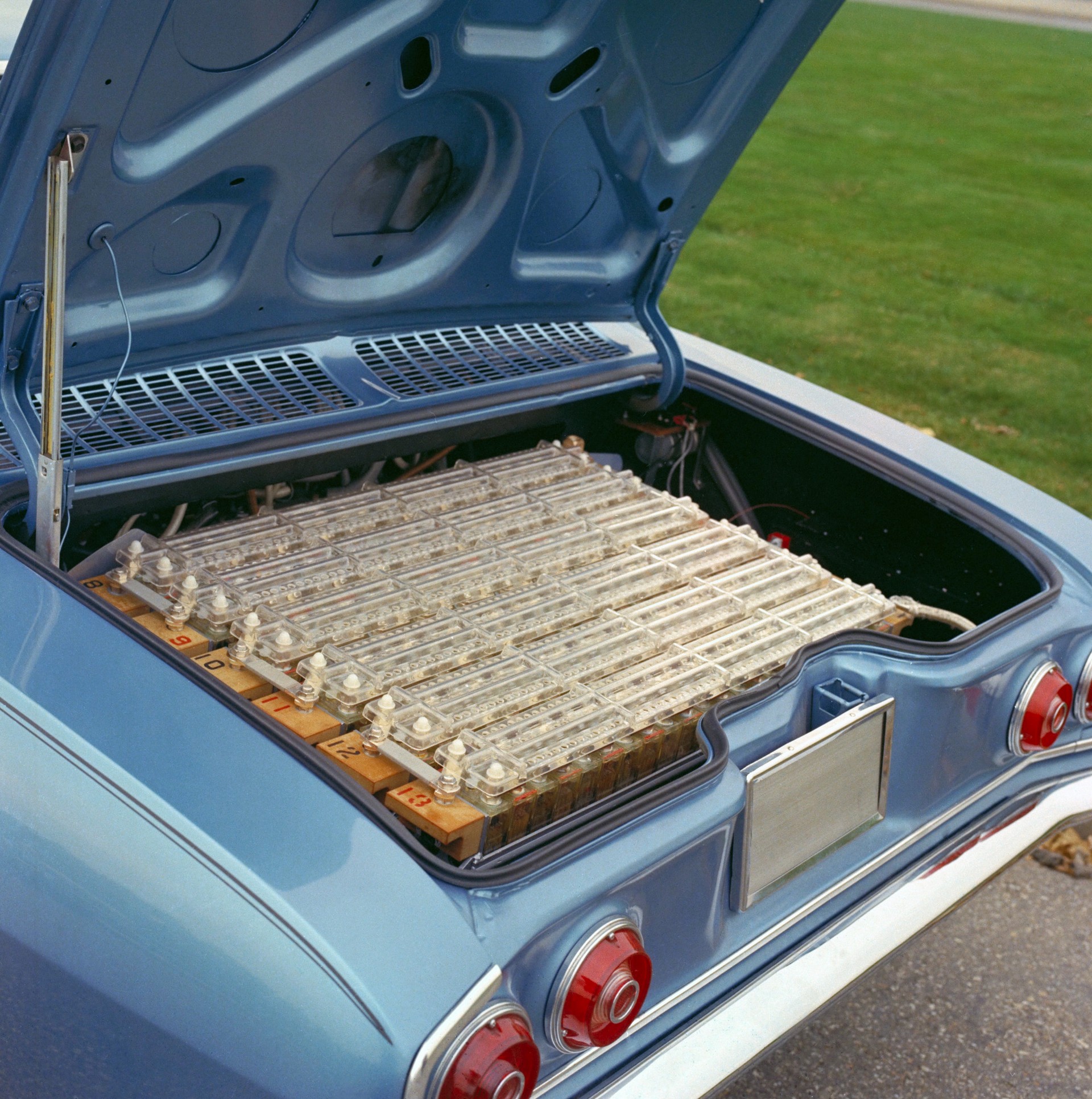General Motors is embarking on an all-electric future, but the journey won’t happen overnight.
That isn’t too surprising, but GM has been working on electric vehicles for more than a century. We told you about the XP 512E a few months ago, and now we’ll take a look at the 1964 Electrovair.
As the name suggests, the car was based on the Corvair, which itself was pretty interesting as it was rear engined and air-cooled. The Electrovair took things even further as the engine was replaced by a 90 hp (67 kW / 91) electric motor that was powered by 450-volt silver-zinc batteries.
While those specifications aren’t impressive these days, the car was developed to test the feasibility of electric vehicles and the capability of the batteries.
Also Read: Remember When Dodge Pulled A Tesla And Made A Lotus-Based EV?
Two years later, GM followed up with the Electrovair II, which boasted a number of improvements. One of biggest was a more powerful electric motor that developed 115 hp (85 kW / 117 PS). This was nearly a 28% improvement over the original motor and it helped the Electrovair II to hit a top speed of 80 mph (129 km/h).
That wasn’t the only change, as the model featured more powerful 532 volt silver-zinc batteries that provided a range of 40-80 miles (64-129 km).
A few years later, GM’s electric vehicle technology was shown to the world when the Lunar Roving Vehicle landed on the moon in 1971. GM partnered with Boeing on the project and it appears that event will be commemorated on the GMC Hummer EV, as previous reports have suggested the electric pickup will have a topographical map of the Sea of Tranquility, which is where Buzz Aldrin and Neil Armstrong landed on the moon.
The Electrovair was never intended for production as the technology simply wasn’t there yet, but it can be seen as paving the way for GM’s modern EVs like the Chevrolet Bolt and the upcoming Cadillac Lyriq.










